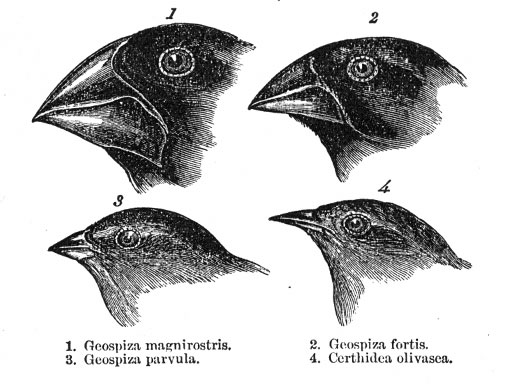Darwin's Predictions

Evolution happens through natural selection. (continued)
Suitably, one of the most striking examples of natural selection in action concerns the very Galapagos finches that Darwin made famous. Since 1973, biologists Peter and Rosemary Grant, working on the tiny island of Daphne Major in the Galapagos, have studied a species of finch called Geospiza fortis (upper right in illustration, which appeared in Darwin's 1839 book about his five-year journey aboard the Beagle). After a drought in 1977 devastated plants bearing small seeds, more than 1,000 of the 1,200 G. fortis finches on the island died. The Grants discovered that larger G. fortis, which could break open larger seeds than smaller G. fortis could, survived better. The survivors mated in 1978, and, on average, their offspring had beaks 4 percent larger than those of the previous generation. Following another drought in 2003, G. fortis with smaller beaks survived better, in part because of stiff competition for bigger seeds after a larger finch species, G. magnirostris, settled the island. Between 2003 and 2005, the Grants found, G. fortis beaks shrank by 5 percent.